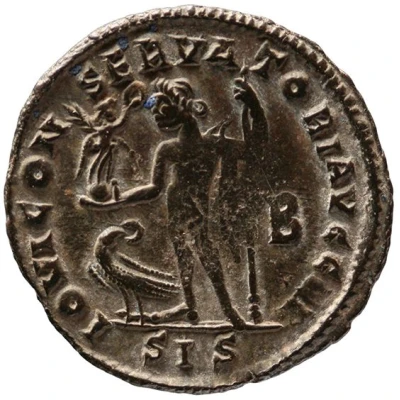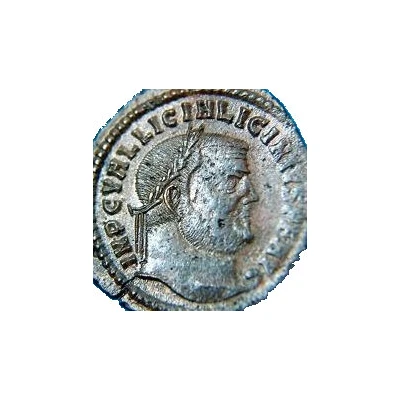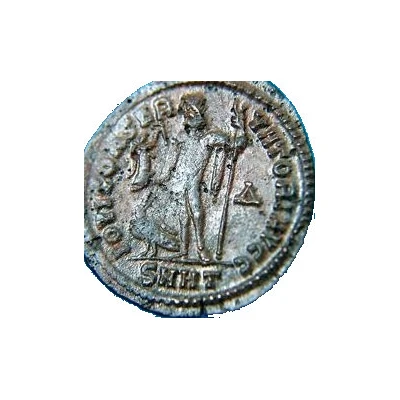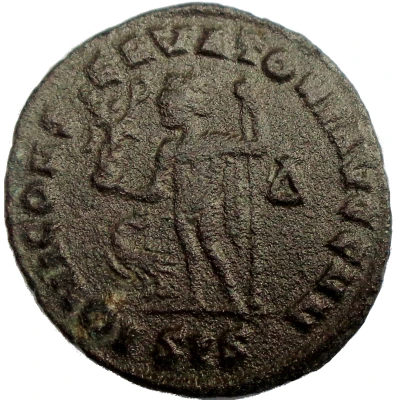


© Kunst Historisches Museum Wien (CC BY-NC-SA 3.0)
Nummus - Maximinus II IOVI CONSERVATORI AVGG NN; Siscia
313 year| Bronze | 3.11 g | 22 mm |
| Issuer | Rome › Roman Empire (27 BC - 395 AD) |
|---|---|
| Emperor | Licinius I (308-324) |
| Type | Standard circulation coin |
| Year | 313 |
| Value | Nummus / Follis (¼) |
| Currency | Argenteus, Reform of Diocletian (AD 293/301 – 310/324) |
| Composition | Bronze |
| Weight | 3.11 g |
| Diameter | 22 mm |
| Shape | Round (irregular) |
| Technique | Hammered |
| Orientation | Variable alignment ↺ |
| Demonetized | Yes |
| Updated | 2024-10-05 |
| Numista | N#397655 |
|---|---|
| Rarity index | 93% |
Reverse
Jupiter, chlamys hanging from left shoulder, standing front, head left, holding Victory in right hand and leaning on sceptre with left hand; to left by feet, eagle.
Officina in right field.
Mintmark in exergue.
Script: Latin
Lettering:
IOVI CONSERVATORI AVGG NN or
IOVI CON-SERVATORI AVGG NN or
IOVI CONS-ERVATORI AVGG NN or
IOVI CON-SERVA-TORI AVGG NN
Unabridged legend: Iovi Conservatori Augustorum Nostrorum.
Translation: To Jupiter, the protector of our two emperors.
Interesting fact
One interesting fact about this coin is that it features the image of Emperor Maximinus II (also known as Maximinus Thrax) on one side, while the other side bears the inscription "IOVI CONSERVATORI AVGG NN," which translates to "To Jupiter, the Conservator of the Two Augusti." This suggests that the coin was minted during a time when the Roman Empire was ruled by multiple emperors, and that Maximinus II was one of them. Additionally, the fact that the coin is made of bronze and weighs 3.11 grams suggests that it was a widely circulating coin used for everyday transactions.



